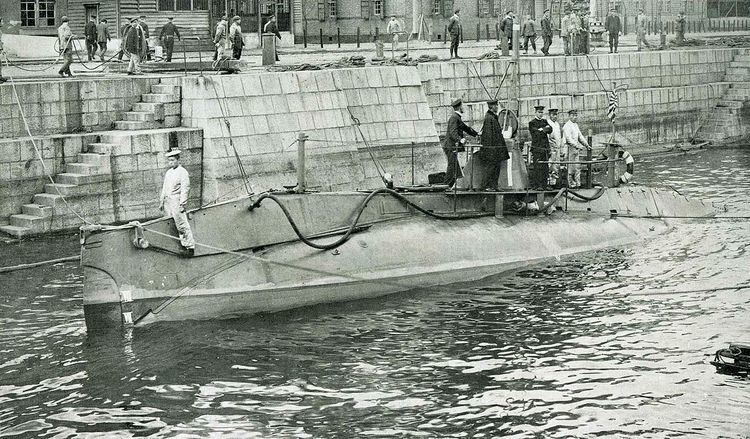Succeeded by Kaigun Type 6 Completed 5 | Preceded by none In commission 1905–1921 | |
 | ||
Builders Fore River Shipbuilding, Quincy, Massachusetts, USA | ||
The No.1-class submarine (第一型潜水艦, Daiichi-gata sensuikan) was the first class submarines of the Imperial Japanese Navy. Consisting of five vessels, these submarines were modified Holland-class vessels built in the United States.
Contents
Background
The Japanese government was aware that the Imperial Russian Navy had obtained the Fulton, a prototype of the United States A-class or Plunger class in 1904 and had ordered an additional six vessels, designed by the Electric Boat Company and built in Russia under an 1904 emergency budget for use in the Russo-Japanese War. These vessels, known as the Som-class, were assembled in St. Petersburg and were designed to be transportable by train.
In order to counter this threat to naval operations against the Russian Pacific Fleet, the Imperial Japanese Navy also made a contract with the Electric Boat Company and its Fore River Shipyard subcontractor for the construction of five Type VII submarines, a more advanced design than the Russian version, which had been developed in Lewis Nixon's Crescent Shipyard in an unsuccessful bid for the US Navy’s United States B class submarine contract.
Construction and operational history
These vessels were built at the Fore River Shipyard in Quincy, Massachusetts from August–October 1904. Arthur Leopold Busch oversaw construction of the vessels, their dismantling, transport to Seattle by rail, shipment to Yokohama and reassembly at the Yokosuka Naval Arsenal in Yokosuka, Japan. The project was done in complete secrecy, as the United States was officially neutral in the Russo-Japanese War.
The vessels arrived on 12 December 1904 in sections at the Yokahama dockyards. The entire project was completed in twelve months and were fully assembled and ready for combat operations by August 1905.Frank Taylor Cable, an electrician who was working for Isaac Rice's Electro-Dynamic and Electric Storage Battery Companies along with Rice's Electric Boat, arrived some six months after Busch, training the Imperial Japanese Navy in the operation of the newly introduced submarines. However, hostilities with Russia were nearing its end by that date, and no submarines saw action during the war. Busch was honored with the Order of the Rising Sun, 4th class by Emperor Meiji for his efforts. These submarines were used primarily for training duties. Submarine No-4 sank at Kure in a gasoline explosion on 14 November 1916, but was raised, repaired and placed back into service.
